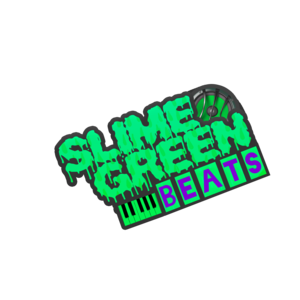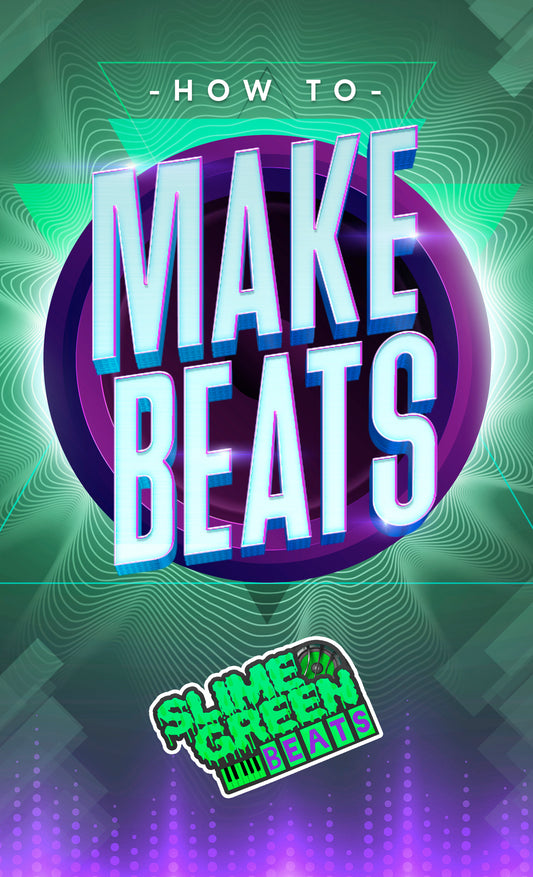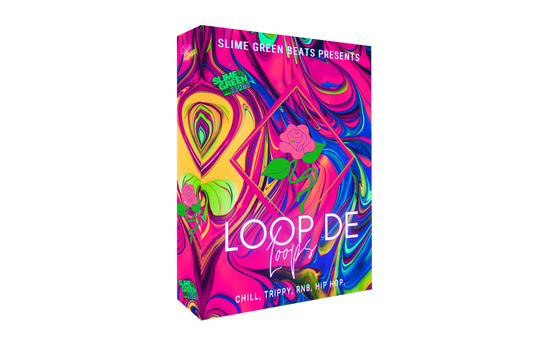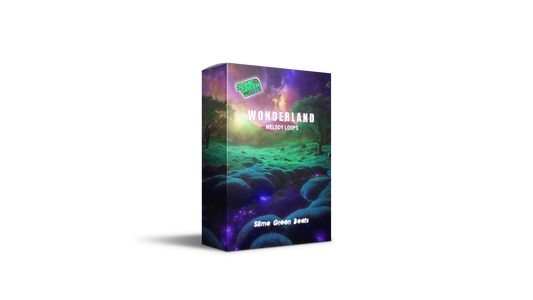Ever wondered why some songs just grab you from the get-go, while others leave you reaching for the skip button? The intro is like the first handshake, the opening line that sets the stage for what's to come. It's your chance to make a killer first impression and reel listeners in for the ride. In today's fast-paced world, if the intro doesn't hit right, your track might not get the attention it deserves. Let's dive into how you can craft intros that not only catch the ear but also stick with the listener long after the song is over.
Key Takeaways
- The intro is your track's first impression, similar to meeting someone for the first time.
- A strong intro sets the mood and gives listeners a reason to stick around.
- Using unique sounds can transform a bland intro into something memorable.
- Understanding the psychology of listeners can help in creating effective intros.
- Avoid common pitfalls by studying successful intros and learning from the best.
Why Your Track's Intro is Like a First Date
Making a Good First Impression
Alright, let's talk intros. Imagine your track's intro as the first time you meet someone special. You want to impress, right? It's all about setting the scene and getting your listener intrigued. First impressions matter, and in music, that intro is your chance to shine. No one wants to start with a boring "Hi, I'm a song." Instead, think of it like a well-crafted icebreaker. You know, something that makes people go, "Wow, tell me more!"
Avoiding Awkward Silences
Now, picture this: you're on a date, and suddenly, there's this awkward silence. Nobody wants that, especially not in your music. Your intro should flow smoothly, keeping the listener engaged without those "umm, what now?" moments. It's like keeping the conversation going with just the right amount of charm and wit. Avoid the musical equivalent of staring at your shoes.
Setting the Mood Right
Setting the mood is key, whether it's a candlelit dinner or a track intro. You want your audience to feel something right from the start. Maybe it's excitement, nostalgia, or even a bit of mystery. Use your sounds like a chef uses spices – a pinch of this, a dash of that – to create the perfect atmosphere. It's all about crafting that vibe that makes people want to stick around and see where the music takes them.
The Secret Sauce: Crafting Intros That Stick
Hook, Line, and Sinker: Grabbing Attention
Imagine you're fishing, but instead of fish, you're catching ears. That's what a killer intro does! It grabs attention faster than a cat spotting a laser pointer. You want that first sound to be as catchy as a pop song chorus. Consider using an unexpected instrument or a quirky sound effect to make listeners go, "What was that?" Here's a little trick: start with a hook that's so good, it'll have listeners humming before they even realize it.
Building Anticipation Like a Pro
Think of building anticipation like making popcorn. You start with a slow sizzle, and before you know it, it's popping all over the place. Use gradual volume changes or layer different instruments to create a sense of build-up. This keeps the audience on the edge of their seats, waiting for the main event. Remember, anticipation is like a good joke's punchline – the setup is everything!
The Art of the Unexpected Twist
Everyone loves a good plot twist, right? Well, your intro can have one too! Throw in a surprising element or change in direction that makes listeners say, "Whoa, didn't see that coming!" Maybe it's a sudden key change or an unexpected rhythm switch. It's like adding a pinch of spice to your grandma's cookie recipe – just enough to keep it interesting without overshadowing the main flavor.
Crafting intros that stick is like being a magician – you’ve got to keep the audience guessing and wanting more. It's all about mixing the familiar with the unexpected, creating a soundscape that's both comforting and intriguing.
For more on how to make your tracks shine, check out effective beat arrangement in music production, where you'll learn about building memorable verses and choruses.
From Zero to Hero: Transforming Bland Intros
Spicing Things Up with Unique Sounds
Ever felt like your track's intro is as exciting as watching paint dry? Well, it’s time to add some pizzazz! Start by experimenting with unique sounds. Think outside the box—use kitchen utensils, nature sounds, or even your pet’s meow! These quirky elements can turn a snooze-fest into an ear-catching experience.
- Explore unusual instruments: Try a kalimba or a theremin.
- Layer unexpected noises: Mix in sounds like a bicycle bell or a typewriter.
- Record your own sound bites: Capture the world around you and integrate it into your music.
Creating Atmosphere with Ambient Magic
Crafting an atmosphere is like setting the stage for a play. You want your listeners to feel something from the get-go. Use ambient sounds to create a mood that draws people in. Pads, synths, and reverb are your best friends here.
Imagine your intro as a foggy morning—mysterious and full of promise. Let the ambient sounds envelop your listeners like a cozy blanket.
The Power of Silence: Less is More
Sometimes, the most powerful tool in your arsenal is... nothing. Silence can be golden. It builds tension, creates contrast, and makes the following sound hit even harder. Think of it as a dramatic pause in a conversation.
- Strategic pauses: Use silence to emphasize key moments.
- Negative space: Allow your music to breathe by not overcrowding it.
- Silence as a reset: Give your listeners a moment to anticipate what’s coming next.
Transforming a bland intro into something memorable isn't rocket science. It's all about experimenting, having fun, and sometimes, breaking a few rules. Remember, your intro is your track's handshake—make it firm and unforgettable. If you're looking to sharpen your skills, check out effective beat arrangement techniques to elevate your music production game.
The Introvert's Guide to Loud Intros

When to Go Big or Go Home
Alright, so you're the quiet type, but your music intro needs to scream "Listen to me!" without being obnoxious. The trick is knowing when to make a grand entrance. Think of it like a surprise party—timing is everything. You want your intro to be the life of the party, not the guy who shows up with a foghorn.
- Identify the right moment: Is your track building up to something epic? That's your cue to unleash the beast.
- Consider the genre: Some styles demand a bold start, while others thrive on subtlety. Know your audience!
- Experiment with volume: Sometimes, just cranking it up a notch makes all the difference.
Balancing Volume and Intrigue
Ever tried to have a conversation in a crowded room? That's what a loud intro can feel like if not done right. You want to grab attention, not drown out the rest of your track. Balance is key.
- Use dynamics strategically: Start strong, then dip, and rise again. It's like a rollercoaster for their ears.
- Layer sounds thoughtfully: Stack your instruments, but make sure each one has space to breathe.
- Leave room for mystery: Even in a loud intro, a bit of intrigue can keep listeners hooked.
Using Dynamics to Your Advantage
Dynamics are your best friend when crafting a loud intro. It's like having a volume knob for excitement.
- Play with contrast: A sudden burst of sound after a quiet moment can be electrifying.
- Control the flow: Let the music ebb and flow naturally, creating peaks and valleys.
- Surprise them: Throw in an unexpected twist to keep listeners on their toes.
"A loud intro doesn't mean chaos. It's about creating a sonic adventure that sets the stage for what's to come."
Ready to make some noise? You might want to check out how to craft a music intro using the free version of Music Maker. It's perfect for those opening credits or just making a statement with your track.
Genre-Bending Intros: Breaking All the Rules
Mixing Styles for Maximum Impact
Alright, so imagine your track's intro as a buffet. You've got a little jazz here, a sprinkle of rock there, and maybe some hip-hop beats for good measure. The idea is to mix and match like you're at a musical salad bar. Why stick to one genre when you can have them all? It's like wearing a tuxedo with sneakers—unexpected, but somehow it works.
- Start with a base: Choose a dominant genre to anchor your intro.
- Add some spice: Layer in elements from other genres for flavor.
- Taste test: Play it back and see if it makes you groove or grimace.
Surprising Your Audience with Genre Twists
Picture this: your listeners are expecting a mellow acoustic intro, and bam! You hit them with a dubstep drop. It's like watching a rom-com and suddenly Bruce Willis shows up with a bazooka. Keep them on their toes, but make sure it fits the vibe of the track.
- Build anticipation: Lull them into a false sense of security.
- Drop the bomb: Introduce an unexpected genre switch.
- Smooth it out: Transition back to the main genre without a hitch.
Keeping It Cohesive Amidst Chaos
Now, mixing genres is all fun and games until someone loses the plot. You don’t want your intro sounding like a musical identity crisis. Think of it as a quilt—different patches, but they all need to come together as one cozy blanket.
- Use a common thread: Find a musical element that ties everything together, like a recurring melody or rhythm.
- Balance is key: Ensure no single genre overpowers the others.
- Test the waters: Get feedback from a friend who'll be brutally honest.
Your intro should be like a well-crafted cocktail: a blend of flavors that surprise and delight, but ultimately leave you wanting another sip.
For those diving into mastering FL Studio for dubstep production, remember that bending genres can make your tracks stand out, but always keep an eye on the mix to ensure it doesn't become a chaotic mess.
The Science of Intros: What Works and Why
Understanding Listener Psychology
Alright, let's talk about the brain. Not in a "wear a lab coat and goggles" kind of way, but more like, "why does a catchy intro make us bop our heads in the car?" See, humans are wired to respond to certain sounds and patterns. Our brains love familiarity, but they also crave a bit of surprise. It's like eating your favorite pizza but with a new topping you didn't expect. Balancing these elements in your intro can make it irresistible.
Analyzing Successful Intros
Ever wonder why some songs just stick? It's not just luck, folks. There's a method to the madness. By breaking down intros from hit tracks, we can see patterns. Maybe it's the way the beat drops right after a soft piano. Or how a sudden silence makes you lean in closer. Here's a quick look at what often works:
- Catchy Hooks: A melody or rhythm that gets stuck in your head.
- Dynamic Changes: Shifts in volume or tempo that keep things interesting.
- Unexpected Elements: A quirky sound or instrument that surprises you.
Applying Data-Driven Techniques
Now, let's get nerdy with numbers. In today's world, data isn't just for the stock market. Musicians use it too! By analyzing listener behavior, like how long they stick with a song or when they hit skip, artists can tweak their intros for maximum impact. Think of it as using a cheat sheet to ace a test. Here's how you can start:
- Track Listener Engagement: Use analytics to see which parts of your intro are hits or misses.
- Experiment with A/B Testing: Try out two different intros and see which one your audience digs more.
- Iterate Based on Feedback: Don't be afraid to tweak and refine based on what the data says.
"In the end, crafting the perfect intro is like making the ultimate sandwich. You need the right mix of ingredients to keep folks coming back for more."
So, whether you're a seasoned pro or just starting out, remember that intros are your golden ticket to capturing your audience's attention. And hey, if you need a bit more help, check out this beginner's guide to music production for some handy tips!
The Do's and Don'ts of Intro Creation

Common Pitfalls to Avoid
Alright, let's dive into the treacherous waters of intro-making. First up, the don'ts. Avoid the temptation to make your intro longer than the last season of your favorite TV show. Nobody's got time for that! Keep it snappy and to the point. Also, steer clear of overly complex sounds unless you're aiming for a "What did I just listen to?" reaction. Overloading your intro with too much can lead to confusion, not intrigue.
Another pitfall? Starting with a bang when your song is more of a gentle hug. Match the intro's vibe with the rest of the track. And lastly, don't forget to check your mix. An intro that's too loud or too soft might just send listeners diving for the volume control.
Best Practices for Killer Intros
Now, onto the good stuff—the do's! Start with a hook that'll grab listeners by the ears and not let go. Think of it as the catchy jingle that gets stuck in your head all day. Keep it fresh and engaging.
Consider using unique sounds or instruments to set the tone. A touch of the unexpected can make your intro memorable. And remember, silence can be your friend. A well-placed pause can create anticipation and make the drop even more satisfying.
Learning from the Masters
Take a page from the pros. Study intros from your favorite tracks and analyze what makes them work. Is it the melody, the rhythm, or perhaps the use of ambient sounds? Break it down and see how you can incorporate similar techniques into your own work.
"Intros are like appetizers," says every music producer ever. "They set the stage for the main course." So, make sure your intro is tasty enough to keep listeners hungry for more.
Incorporate these tips, and you'll be on your way to crafting intros that not only capture attention but also enhance the overall experience of your song's structure. Happy creating!
The Evolution of Intros: A Historical Perspective
How Intros Have Changed Over Time
Remember when intros were just a few seconds of awkward strumming or random drum hits? Yeah, those days are long gone. Once upon a time, intros were like the warm-up act you politely clapped for while waiting for the main event. Now, they're the headline. Over the decades, intros have morphed from a mere musical appetizer to the main course. In the 60s, bands like The Beatles started experimenting with catchy hooks right from the start. Fast forward to today, and intros are practically a genre of their own, setting the stage for what's to come with flair and finesse.
Iconic Intros That Made History
Let's take a stroll down memory lane with some intros that have become legends in their own right:
- "Smoke on the Water" by Deep Purple: That riff is so iconic, even your grandma can hum it.
- "Billie Jean" by Michael Jackson: The bassline that made everyone attempt the moonwalk.
- "Wonderwall" by Oasis: The acoustic strumming that turned every teenager into a wannabe rock star.
These intros didn't just start songs; they started movements, creating earworms that have stood the test of time.
What We Can Learn from the Past
If history has taught us anything, it's this: Never underestimate the power of a killer intro. The greats knew how to hook you from the first note, whether it was with a catchy riff, a haunting melody, or a bold silence. So, take a page from their book and make your intros unforgettable. After all, in the world of music, the intro is your one shot at a first impression. Make it count!
The way we start our stories has changed a lot over time. From simple beginnings to complex introductions, the evolution of intros shows how creativity grows. If you're looking to enhance your music with unique beats, visit our website today! Discover a variety of styles that can elevate your sound and make your tracks stand out.
Conclusion
So, there you have it, folks! Crafting a killer intro for your track is like trying to make the perfect cup of coffee—everyone has their own secret recipe, but it all boils down to grabbing attention and keeping it. Whether you're starting with a catchy hook or building a mysterious atmosphere, remember that your intro is the first handshake with your listener. Make it firm, but not too firm, and definitely not sweaty. And hey, if you mess it up, just call it jazz and move on. Keep experimenting, keep listening, and most importantly, keep having fun with it. After all, music is supposed to be fun, right? Now go out there and make some noise!
Frequently Asked Questions
Why is the intro of a track important?
The intro grabs the listener's attention and sets the mood for the entire song. It's like the first impression that can make listeners want to hear more.
How can I make my track's intro stand out?
Use a catchy melody or unique sound to hook the listener right away. Building atmosphere with ambient sounds can also make your intro memorable.
What are some common mistakes to avoid when creating an intro?
Avoid making the intro too long or too complex. It should be engaging but not overwhelming. Also, steer clear of awkward silences that might lose the listener's interest.
How do different genres affect the way intros are made?
Different genres have unique characteristics that can influence the intro. For example, a pop song might start with a catchy hook, while a classical piece might begin with a soft melody.
What role does silence play in an intro?
Silence can create suspense and make the following music more impactful. It's a powerful tool when used wisely to grab attention.
Can I start a song with the chorus instead of an intro?
Yes, starting with the chorus can be an effective way to immediately present the song's main theme and hook the listener right away.








